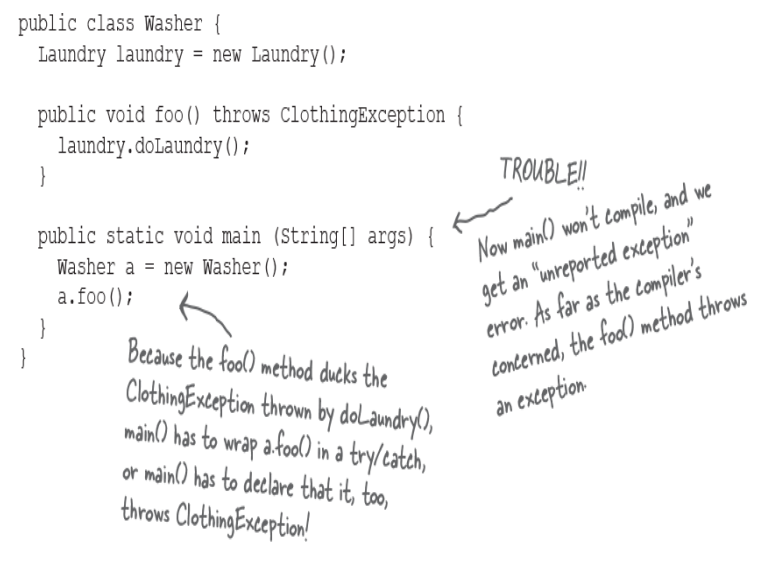Java's Exception handling
Java
Intro
So, how does a method tell you it might throw an exception? You find a throws clause in the risky method’s declaration.
Risky methods that could fail at runtime declare the exceptions that might happen using “throws SomeKindOfException” on their method declaration.
Try-catch to catch the exception
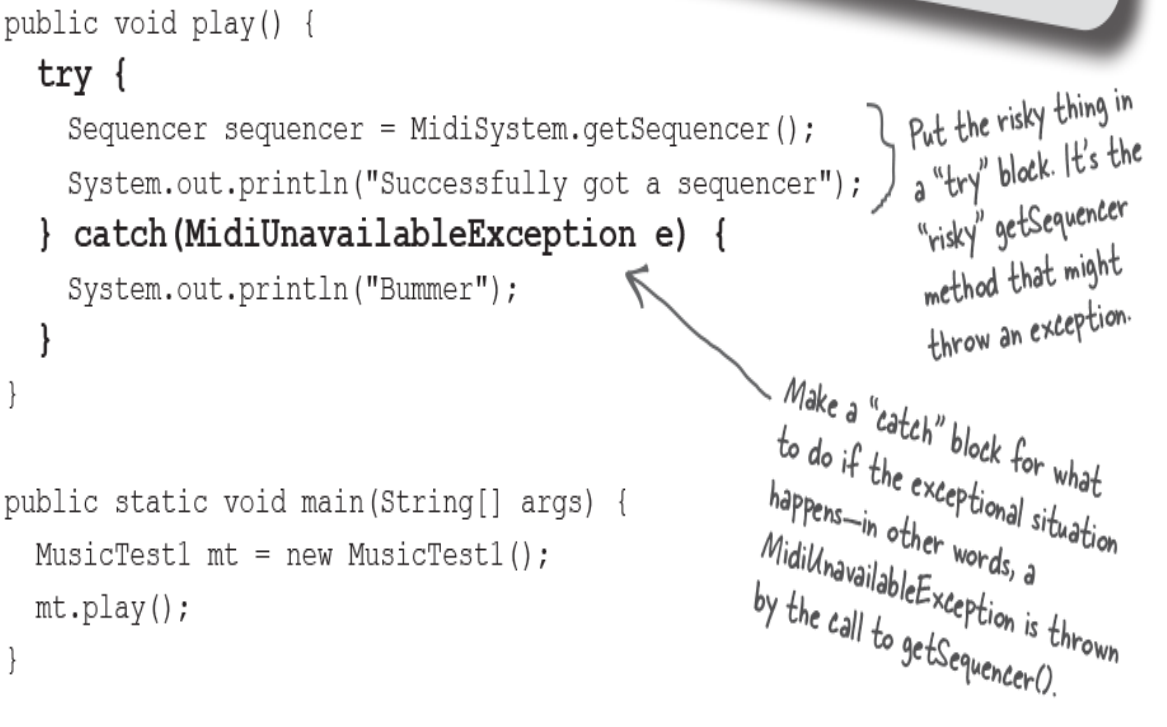
Basically, I am gonna TRY this risky thing, and I will CATCH myself if it fails.
A try/catch block tells the compiler that you know an exceptional thing could happen in the method you’re calling, and that you’re prepared to handle it. That compiler doesn’t care how you handle it; it cares only that you say you’re taking care of it.
Exception is an object of type Exception
Everything in Java is an object remember? Even exceptions.
Remember polymorphism’s property so an object of type Exception can be an instance of any subclass of Exception.
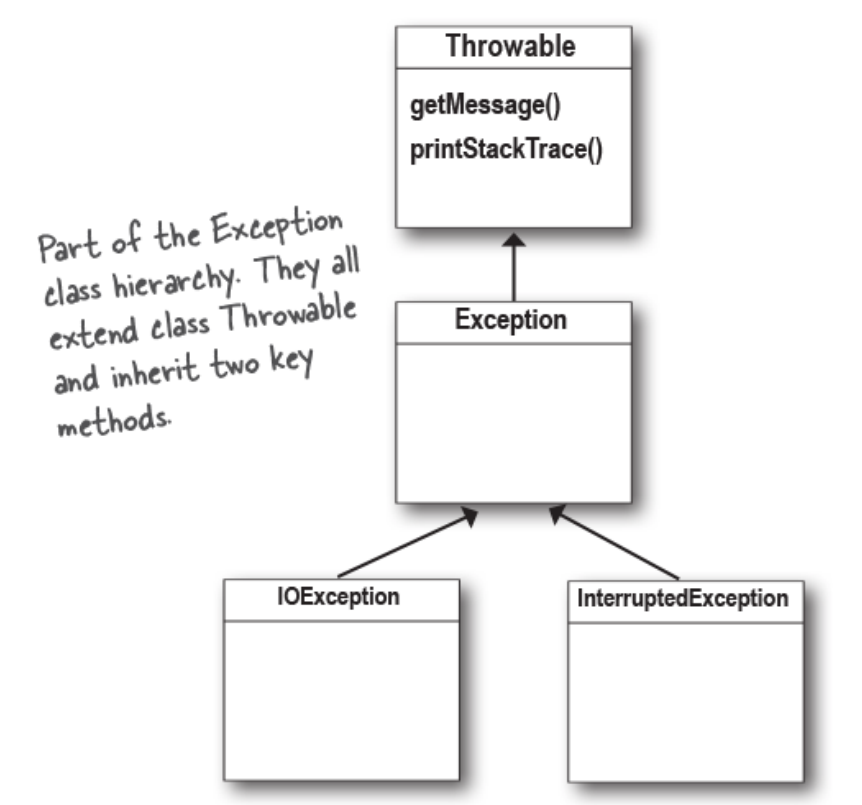
Because an Exception is an object, what you catch is an object. In the following code, the catch argument is declared as type Exception, and the parameter reference variable is e.
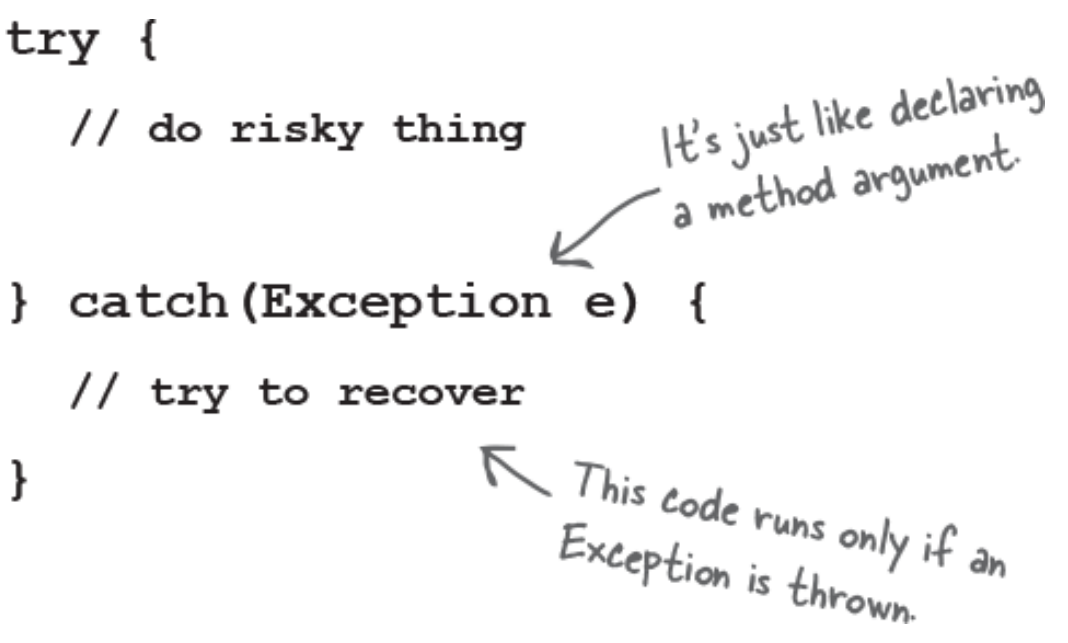
If it’s your code that catches the exception, then whose code throws it?
You’ll spend much more of your Java time handling exceptions than creating and throwing them yourself. For now, just know that when your code calls a risky method —a method that declares an exception— it’s the risky method that throws the exception back to you, the caller.
In reality, it might be you who wrote both classes. It really doesn’t matter who writes the code…what matters is knowing which method throws the exception and which method catches it.
When somebody writes code that could throw an exception, they must declare the exception too!
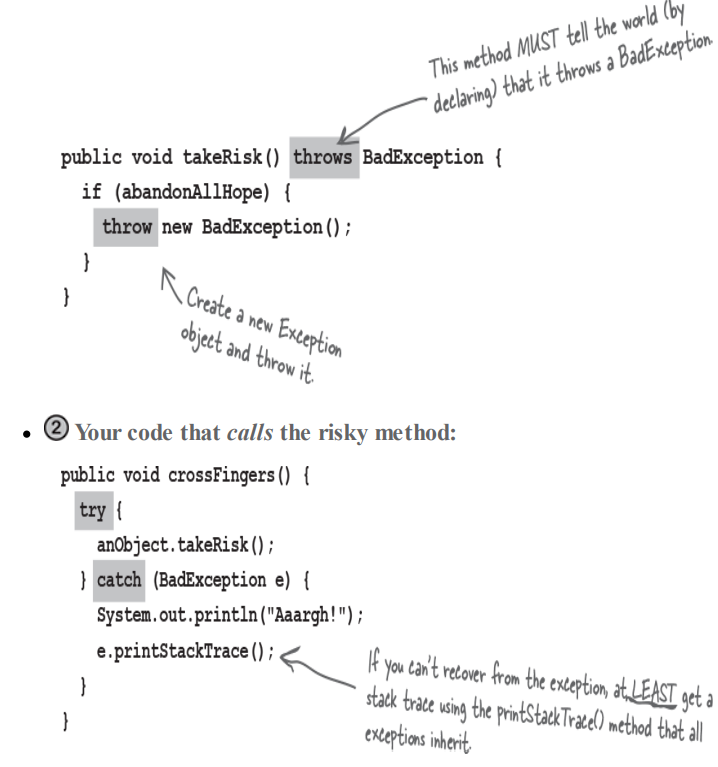
One method will catch what another method throws. An exception is always thrown back to the caller.
The method that throws has to declare that it might throw the exception.
1) If you throw an exception in your code, you must declare it using the throws keyword in your method declaration.
2) If you call a method that throws an exception (in other words, a method that declares it throws an exception), you must acknowledge that you’re aware of the exception possibility. One way to satisfy the compiler is to wrap the call in a try/catch. (There’s a second way we’ll look at a little later in this chapter.)
Runtime exception
Exceptions that are NOT subclass of RuntimeException are checked by compiler (i.e. “checked exceptions”). But RuntimeException are not checked by compiler (i.e. “unchecked exceptions). You can do throw catch and declare RuntimeException but you don’t have to cuz the ocmpiler doesn’t check anyway. Any exception class that extends RuntimeException gets a free pass.
Subclasses of RuntimException are ClassCastException and NullPointerException.
The compiler does not check cuz most RuntimeExceptions come from a problem in your code logic, rather than a condition that fails at runtime in ways that you cannot predict or prevent. A try/catch is for handling exceptional situations, not flaws in your code. So it is not appropriate here.
2 or multiple exception handling
public class Laundry{
public void doLaundry() throws PantsException, LingerieException{
//code that can throw either exception
}
}
Then, to invoke this risky method with try & catch:
public class WashingMachine{
public void go(){
Laundry laundry = new Laundry();
try{
laundry.doLaundry();
} catch(PantsException pex){
//recovery code
} catch(LingerieException lex){
//recovery code
}
}
}
multiple catch blocks MUST be ordered from small to big

The higher up the inheritance tree, the bigger the catch “basket.” As you move down the inheritance tree, toward more and more specialized Exception classes, the catch “basket” is smaller.
Looking at this diagram, ShirtException is big enuff to take TShirtException or DressShirtException. But ClothingException is even bigger (i.e. more things can be referenced using this exception type). Then we have the mother of all catch arguments - Exception, which can catch any exception.
So size matters when you have multiple catch blocks. The one with the biggest basket has to be on the bottom. Or else, ones with smaller baskets are useless because once the big basket catch block is executed, the small basket catch, which is more specialised for that particular exception, is overlooked.
Siblings (exceptions at the same level of the hierarchy tree) can be in any order.
Exceptions are polymorphic
Like all objects, exceptions can be referred polymorphically. For example, a LingerieException object can be assigned to a ClothingException reference.
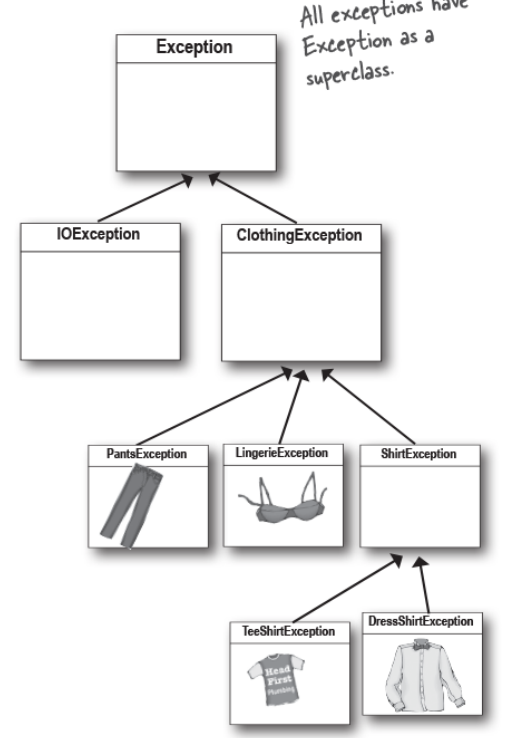
Advantage is that method does not have to explicitly declare every possible exception it might throw - can just declare a superclass of exceptions.
Same with catch blocks - no need to write catch for each possible exception as long as your catch can handle any exception that is thrown.
1) can declare exceptions using a superclass of the exceptions you throw
public void do Laundry() throws ClothingException{
}
Declaring superclass (ClothingException) lets us throw any subclass of this superclass like PantsException,LingerieException, etc without explicitly declaring them individually.
2) can catch exception using a superclass of exception thrown
try{
laundry.doLaundry();
} catch(ClothingException cex){
//recovery code
}
Using catch exception with superclass (ClothingException) can catch any ClothingException subclass like LingerieException and PantsException.
But good practice is to write a different catch block for each exception that you need to handle uniquely.
Ducking (by declaring) only delays the inevitable compile error
If you don’t want to handle an exception, you can duck it by declaring it.
There are 2 ways to satisfy compiler when you call a risky (exception-throwing) method.
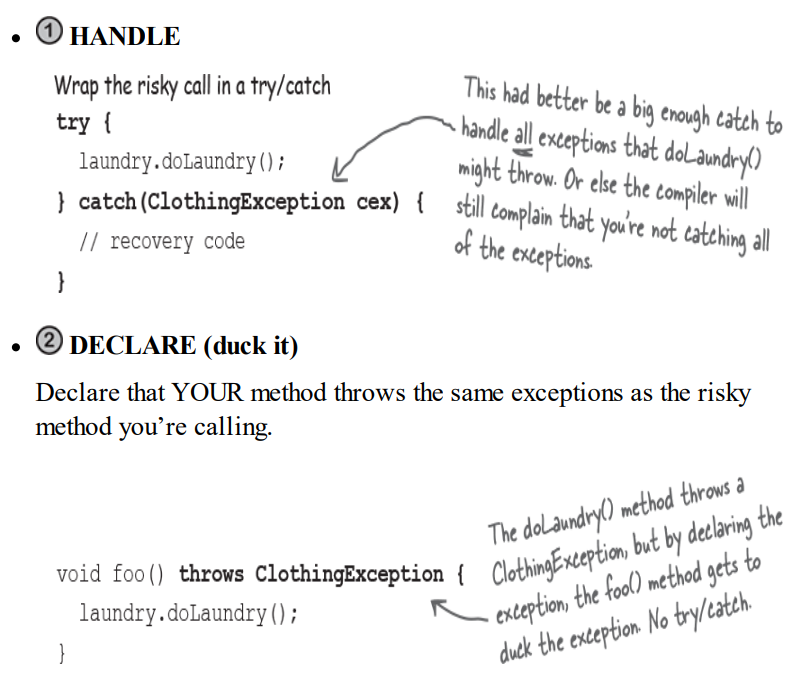
But when you duck by declaring, this means whatever invokes the foo() method has to follow this Handle or Declare law. If foo() ducks the exception, and like main() calls it, main() has to deal with that exception.
